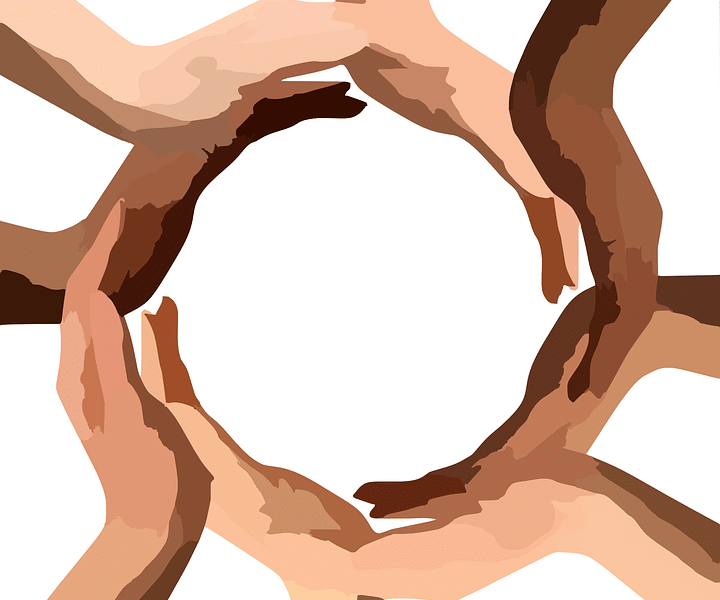
LOS ANGELES (WOMENSENEWS)–They sit in the living room of a small, three-bedroom house in crime-ridden South Central Los Angeles, seven women trying to put the fragile pieces of their lives back together. These former inmates have spent a total of 24 years in the lock-up, mainly in state penitentiaries. Sixteen children have been separated from these mothers. One offender has not seen her four children in four years.
Their refuge from a sea of sadness is A New Way of Life Reentry Home, a sober living residence for women with no place to go after they get out of prison. Their angel of mercy is Susan Burton, who spent 12 years behind bars during a 20-year journey back and forth from prison six times.
“All I’m doing is making a small contribution to a big problem,” Burton says. “The prison system is 21st-century slavery for these women. I started with an anger that fueled a passion to make a change for people like myself who kept returning to prison.”
For three years now, Burton’s been doing what she can to overcome the big problem of finding financial and social resources for newly released inmates. After being released from prison in 1995 and getting a job working as a nurse, she started putting away money. Finally, with enough for a down payment on a place to live, she opened up her own home in 1999 to give newly released female inmates temporary housing and help them find job training and treatment for drug addictions.
She has watched 80 women leave and try to get back on their feet. Unlike many halfway houses that reject clients with mental health, drug, and financial problems, Burton does not turn anyone away. As long as a woman is committed to her recovery, Burton will take her in.
Number of Women Prisoners Increase 400 Percent in Two Decades
Since 1980, the number of women entering prisons in the United States has risen almost 400 percent, double the rate for men, according to the Correctional Association of New York’s Women in Prison Project. Currently there are an estimated 1 million women in custody, in prison, in jail, on parole or probation in the United States, the association says. The majority are incarcerated mothers with an estimated 1.3 million children under age 18. And many of these women don’t have services such as Burton’s at their disposal.
“People are more hostile to the rehabilitation of prisoners than any other issue today,” says Beth Richie, a criminal justice and women’s studies professor at the University of Illinois at Chicago. “These women get no sympathy because everyone has a story about what happened to them as a victim of crime, which leads to hugely negative generalizations about people who are incarcerated.”
Advocates for change say that the lack of rehabilitation programs for women stems from the very nature of the prison system. Since government officials are charged with protecting the public safety, critics say, they have a vested interest in incarceration.
Federal, state and local governments do little to rehabilitate women in prison, or to assist them in re-entering the community–an issue that will be discussed at the 10th National Roundtable for Women in Prison at Columbia University in New York, scheduled to begin today.
In order to save money and to be seen as tough on crime, state governments have cut back on such rehabilitation programs as drug treatment, vocational education, and classes to prepare people for life after prison, says Joan Petersilia, a professor of criminology, law and society in the School of Social Ecology at the University of California at Irvine and a leading expert on parole. Even under the best of circumstances, experts say, there aren’t nearly enough resources for the numbers of women who need them.
‘New Way of Life’ Program Cheap and Effective
Terry James, imprisoned for a variety of drug charges, says she’d be back behind bars if not for Burton’s intervention. Deciding she wasn’t going to turn 50 locked up, James called Burton to pick her up when she was released on parole last year.
“I tried to get into substance-abuse programs in prison many times but kept getting on waiting lists with no treatment and no referral,” James says.

The national average price tag for housing a woman in state prison for one year is $20,674; in New York it is $32,000, according to the Women’s Prison Association. Residential drug treatment runs $17,000 to $21,000 per prisoner. Yet Burton claims that it would take only $2,500 to provide re-entry services for one woman’s six-month stay at a program like hers.
“If there were places that were designed for these women with direct services, they would not go back” to prison, Burton says. “You don’t realize how incarceration affects people. My house is a place where they can get rid of their anger and shame as they get better.”
Ann Jacobs, executive director of the Women’s Prison Association, agrees with Burton’s vision, noting that most prisons operate without counseling staffs.
“The public thinks people are rehabilitated behind bars and in the main it’s just not true,” Jacobs says.
Women Face Enormous Hurdles When Leaving Prison
Advocacy groups such as the National Network of Women in Prison are questioning current re-entry policies, no organized national movement exists to improve the situation, Richie says. The Sept. 11 terrorist attacks, she adds, produced a political climate that has eroded the rights of criminal defendants, making arguments for more prisoner rehabilitation programs all the tougher to win.
Yet the problems facing these women when they are released are enormous. They leave prison with next to no income; few have any work experience and their lack of education limits their ability to gain employment.
And while many of the issues facing men are similar to those for women, male prisons typically provide more vocational programs, more training for skilled occupations and greater availability of work-release programs, according to Barbara Owen, a professor in the Department of Criminology at California State University in Fresno. Women usually leave prison with less money than men because they earn less inside. They also have many issues to address concerning the health and well-being of their children while they serve time. Sexual and physical abuse is another issue for inmates to deal with, as nearly 60 percent of women in state prisons have reported experiencing it at some point in their lives.
“Public policy discussions regarding prisoner re-entry have failed to incorporate the specific challenges that incarcerated women face as they return to their communities,” says Richie. “The lack of knowledge about gender as an important variable in re-entry has significantly limited intervention initiatives.”
Some states bar criminal offenders from jobs involving child care, elder care and health care–all of which are dominated by women. Men, who are more likely to go into jobs that require manual labor, are less affected by these restrictions.
Some mothers with criminal records and drug problems are denied access to public benefits such as welfare cash assistance, food stamps and federal housing subsidies. Since about 75 percent of crimes that landed mothers in federal prison are drug-related, many of these women will face a nearly impossibly high set of hurdles as they try to set up permanent living arrangements.
Women also must grapple with laws that make it difficult for them to maintain their parental rights. If ex-offenders don’t work closely with the state to keep custody of their children, courts will determine where and with whom the child will live. The difficulty of maintaining contact with children during incarceration and re-entry can be overwhelming for inmates under stress and without financial support.
Few Scattered Programs Do Provide Services
In a few areas, community-based programs with private funding, such as Burton’s, have stepped in to give the health, housing and legal services necessary to the re-entry process.
“Women would come back into the community who were released wearing their prison jumpsuits in the middle of the night with no money,” says Susan Galbraith, the founder of Our Place, a drop-in center in Washington, D.C., that provides pre- and post-release services for women who are or have been incarcerated. “I was appalled that they were being treated like this and it still goes on.”
Since 1998, Our Place has helped more than 1,000 women. With most prison facilities located far from her location, Galbraith drives six hours to set up pre-release programs for inmates and provides transportation for families on a monthly basis.
The City of Topeka and the Kansas Department of Corrections have come up with a unique program to rehabilitate houses for low- and moderate-income homeowners while providing training for minimum-security women inmates. The city finds homes and building supplies. The Department of Corrections provides women to do the carpentry, painting, carpet installation, and supervisors for the inmates. In this way, the city can lower its rehabilitation costs and create more units while providing hands-on training. Women learn marketable skills to support themselves and their families after release. Nearly 100 inmates have successfully completed the program.
For the women at Sue Burton’s Reentry Home, obtaining job skills is the first step towards survival. Burton’s goal is to open an office called “Enhancing Lives of Women on Parole” in a central location that will allow ex-offenders to come in for access to transportation, clothing and group counseling. The next step will be the purchase of more re-entry homes in the area.
“The community loves what I’m doing and my neighbors are very supportive,” Burton says confidently. “I don’t want to miss out on the progress these women are making or the opportunity to help them when they need it. I want them all to beat the odds.”
Pamela Burke is a television producer and freelance writer living in Los Angeles.
For more information:
Chicago Legal Advocacy for Incarcerated Mothers:
http://www.c-l-a-i-m.org
Women’s Prison Association and Home, Inc.:
http://www.wpaonline.org

